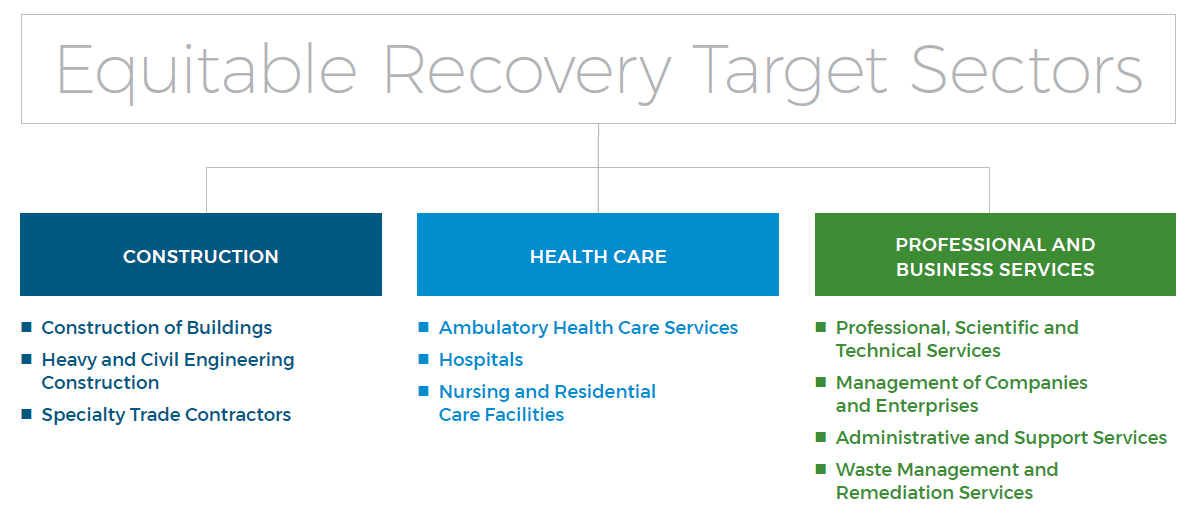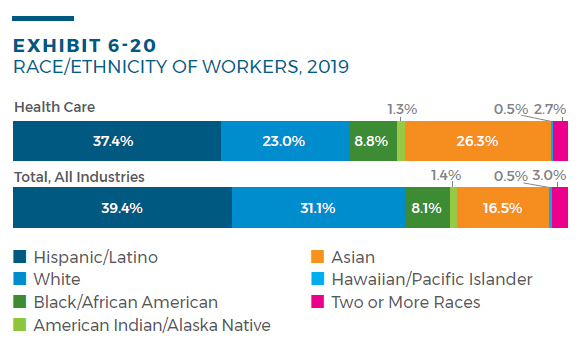Introduction
Why Focus on Occupations Through the Lens of Race and Ethnicity?
Center for a Competitive Workforce is motivated by the vision of equity and more widely shared prosperity. Though the Los Angeles Basin, which encompasses Los Angeles and Orange counties, is home to an extremely diverse employment base and abundant opportunities in all industry sectors, persistent inequality hinders the ability for every worker to take advantage of the region’s economic offerings. One of the clearest disparities dividing the Basin’s workforce is the opportunity gap along racial and ethnic lines. This is revealed in the data, which shows many of the Basin’s better-paying industries and occupations have lower levels of diversity than our population demographics would suggest. More inclusivity and more widely shared opportunity can be achieved, and one valuable tool is workforce development, which can be focused to create an increasingly racially and ethnically diverse pool of skilled talent for the Basin’s well-paying jobs which are highlighted in this report.
The COVID-19 pandemic has only exacerbated these divisions, as a disproportionately large percentage of the region’s workers of color were impacted by job loss and many families struggled to participate in remote education due to financial constraints and lack of resources. The pandemic has brought to the foreground how race related barriers and occupational segregation have contributed to the current economic fallout from COVID-19. In response to the urgency arising from the need to rebuild the economy, this report attempts the shed light on several areas where employers and community colleges working together can address disparities in the workforce.
This report comes at a critical point, where the economy of the Los Angeles Basin can be strengthened with the proper attention to improving opportunity for Black, Hispanic, Asian American and Pacific Islander (AAPI) and other communities of color. Through the promotion of increased diversity in higher-skilled, higher-paying industries and occupations, the region can build back more equitably than before while fostering a more dynamic economy that is positioned for stronger future growth.
The report also assesses whether community college supply is meeting workforce demand for occupations that are considered middle-skill for its highly diverse population of students. With total enrollment of nearly 750,000 students in the LA region’s community college system and opportunity to further expand enrollment, the scale of training in this system is large enough to make significant and measurable progress on creating a more diverse talent pool — a foundation for greater ethnic and racial diversity in the Los Angeles Basin’s key industries and well-paying, middle-skill occupations.
Please review the Recommendations section lower on this webpage to get CCW’s perspective on solutions to address equity in our economy, within the scope of this report.
Please note that the pdf file of the report has much more detail than this webpage. Please download it at the link below.
Where are people working?
To take a closer look at where the workforce in the Los Angeles Basin is lacking in diversity and equity, it is important to also examine where workers from each demographic group are currently employed.
For Hispanic workers, the highest number of workers are employed in the food services and drinking places industry, with nearly 260,000 employees. This is followed by administrative and support services, educational services and ambulatory health care services. Hispanic workers are heavily concentrated in manufacturing industries, waste management and remediation services and private households. In industries like leather and allied product manufacturing (non-apparel products made from rubber, plastics or textiles), paper manufacturing and primary metal manufacturing they make up over 65 percent of the total workforce. Meanwhile, they have poor representation in information, finance, air transportation and the industries of performing arts and spectator sports. Many of these industries where Hispanic workers are present at lower levels are higher skilled, information-based industries that pay high wages and require advanced levels of education.
For Black workers, the highest number of workers are employed in administrative and support services, social assistance, educational services and food services and drinking places. Black workers have high concentrations in industries such as government, transportation and social assistance. Administration of housing programs and human resource programs are two important sectors where their proportion of total employment are highest, with transit and ground passenger transportation ranked first. Black workers are not as prevalent in wholesale, manufacturing and oil and gas extraction industries.
For Asian workers, the highest number of workers are employed in the professional, scientific and technical services sector, with high numbers of workers in similar industries compared to our previous two demographics. The highest proportion of industry employment for Asian workers is in health care, computer and electronic product manufacturing and wholesale. At its highest concentration this demographic accounts for about 30 percent of employment in certain industries. Asian workers are under-represented in oil and gas extraction, mining, waste management and certain manufacturing industries.
The connection between educational attainment and occupations
Educational attainment is one of the contributing factors to occupational disparities. Higher levels of educational attainment allow workers in the LA Basin to access higher-skill job opportunities that have stronger job security and career pathways. These differences are caused by a multitude of factors, ranging from access and household wealth to K-12 experiences and how well those schools have prepared learners for college. CCW hopes this data informs meaningful conversations about how we can collaboratively create more economic mobility by increasing access to higher educational attainment for all Angelenos, because we all have aspirations of family-supporting wages and healthy standards of living.
The unequal impact of COVID, and recovery strategies to address it
Black and Hispanic workers are more commonly employed in these service sectors and occupations that were frequently laid off during the pandemic, primarily because those occupations didn’t support work-from-home. Analysis of unemployment insurance claims from the California EDD finds that nearly 650,000 initial claims were filed by Black workers in the Los Angeles Basin since the start of the pandemic, which is equivalent to 10.5 percent of all claims filed in the region; however, Black workers make up just 8.1 percent of the labor force. Hispanic workers filed about 38 percent of all initial unemployment insurance claims in this timeframe, and make up just under 40 percent of the labor force. In other words, the layoffs driven by the COVID-19 pandemic affected specific industries and occupations that tended to have higher percentages of Black and Hispanic workers, so the impacts of the crisis worsened equity in the region as a whole.
Even with industries currently undergoing the reopening process in the region, workers and households are still struggling, with this report’s highlighted demographic groups bearing the heaviest burden from the pandemic. For this reason, our report focuses on identifying industries and occupations that these workers can target during the recovery which can lead to higher pay, more secure careers and pathways that with additional training and experience can lead to even higher-skilled occupations. Addressing the occupations and industries that could benefit from heightened inclusion can ultimately
strengthen the economic recovery process in the LA Basin and advance economic opportunities of local workers from all racial and demographic backgrounds.
Jobs with a bright future
Middle-Skill Occupations
Traditionally, the Center for a Competitive Workforce has selected target occupations that employ mostly middle-skill workers. These middle-skill opportunities typically have educational attainment levels that are higher than a high school diploma but less than a bachelor’s degree.
It bears mentioning that CCW has profiled over 100 well-paying occupations in the reports on this website, which are expected to have strong job opening forecasts, so please take time to explore those reports.
This report identifies 11 occupations in construction, health care and professional and business services, which are sectors that have all been selected as industries in which more diverse racial and ethnic representation would better reflect the diversity of the Los Angeles Basin’s population. Within the industries, these occupations have been chosen as targets where opportunities are available for certain demographics that are less concentrated here currently.
Occupations in Construction: 1. Electricians, 2. Construction Managers, 3. Construction and Building Inspectors, 4. Solar Photovoltaic Installers
Occupations in Health Care: 1. Licensed Vocational Nurses, 2. Dental Assistants, 3. Respiratory Therapists
Occupations in Professional and Business Services: 1. Secretaries and Administrative Assistants, 2. Executive Secretaries and Executive, Administrative Assistants, 3. Paralegals and Legal Assistants, 4. Graphic Designers
Secretaries and Administrative Assistants
Wage: $17/hr.
5-Year Projections
35,000 job openings
in LA Basin
Licensed Vocational Nurses
Wage: $24/hr.
5-Year Projections
14,900 job openings
in LA Basin
Electricians
Wage: $24/hr.
5-Year Projections
15,800 job openings
in LA Basin
Exec Secretaries & Exec Administrative Assistants
Wage: $27/hr.
5-Year Projections
10,400 job openings
in LA Basin
Paralegals and Legal Assistants
Wage: $18/hr.
5-Year Projections
6,300 job openings
in LA Basin
Dental Assistants
Wage: $15/hr.
5-Year Projections
6,200 job openings
in LA Basin
Construction Managers
Wage: $41/hr.
5-Year Projections
4,800 job openings
in LA Basin
Graphic Designers
Wage: $21/hr.
5-Year Projections
4,200 job openings
in LA Basin
Construction and Building Inspectors
Wage: $36/hr.
5-Year Projections
1,600 job openings
in LA Basin
Solar Photovoltaic Installers
Wage: $17/hr.
5-Year Projections
1,200 job openings
in LA Basin
Respiratory Therapists
Wage: $33/hr.
5-Year Projections
900 job openings
in LA Basin
Community colleges in the region offer noncredit awards, certificates, and associate degrees in many areas that provide the necessary training for the 11 target occupations in this report.
Talent Development
The report details, by region of LA County, the community college programs that serve as pathways into these occupations. The report is quite detailed in review of student program completions and related data, including information on all the community colleges in the LA Basin. CCW encourages readers to explore this detail in the report pdf file. Below is a snapshot of supply of talent from the region’s community colleges for the target occupations, which reflects tremendous opportunity to increase scale of enrollments and awards to meet the job opening outlook.
Recommendations
While the three industries identified in this report have a higher prevalence of white and Asian workers, the analysis of community college student demographics shows that students who are entering these fields are incredibly diverse with much higher representation in terms of race and ethnicity than that of the overall workforce. This is a hopeful sign and may indicate that extensive efforts by the education community and regional employers to encourage students to enter promising middle-skill careers are paying off. The analysis does, however, reveal disparities in pay for students exiting community college programs. Overall, Black and Hispanic students trail white students in median earnings in most sectors, data which is worthy of additional study. The detailed profiles compiled for each of the 11 targeted occupations also highlight disparities in pay. In fact, in seven of the 11 occupations, white workers earn more than Asian, Black and Hispanic workers. Occupations with this disparity include electricians, construction managers, graphic designers, Licensed Vocational Nurses and dental assistants. This finding is concerning and suggests that intentional work is needed to ensure parity in worker income, especially as it pertains to this report’s focus on community college students who are entering these careers.
Buy-in from employers is a critical component of this work, which is why the continued engagement that connects businesses with K-12 schools and community colleges is an important step toward improving representation by people of color in these industries. By increasing awareness of disparities in the workforce in the areas of race/ethnicity and worker pay, we can begin to change the composition of the workforce for businesses that stand to benefit from increased diversity.
Increased Engagement, Guidance and Mentorship Targeting the Three Industries and 11 Occupations Extensive work has been underway in recent years in the LA Basin to guide students into strong middle-skill career pathways. The industries and occupations highlighted in this report can serve as a focal point for those efforts to improve equitable access to in-demand jobs that offer a secure and stable livelihood. Much groundwork has been laid in this area but expanded mentorship and guidance programs at the middle and high school level may be warranted with a focus on these pathways. The region has developed extensive partnerships among K-12 districts, community colleges and employers that can be leveraged to support students as they advance into these careers. The three industries and 11 occupations also are a promising area for dislocated workers who are looking to retrain and enter a new field in the wake of the pandemic.
Increased Outreach and Raised Awareness with Businesses and Industry
Alongside this must come wider-reaching campaigns for awareness and outreach to connect workers with the requisite programs to target the region’s middle-skill, well-paying opportunities. It is important that businesses themselves play a role in connecting with community colleges and partner on programs to reach out to communities and share their employment opportunities.
Broadband Internet for All
Many thousands of people of color in the LA Basin are unconnected or under-connected to high-speed internet service, which is a fundamental tool for remote education including via the community college system. Eliminating the digital divide is a critical factor in student and job-seeker pathways and success. Supporting increased access, such as via the LA Digital Equity Action League (LADEAL.org) will advance access to well-paying occupations for all.
Investments in Pathways and Partnerships with Employers that Promote Diversity
Community colleges can work with employers to build direct on-ramps into work-based learning, paid internships and employment opportunities for the students. There are many regional stakeholders in education and industry who have been working to strengthen outreach and awareness as well as expand partnerships. This work is valuable and transformative, and it is imperative that it continue. Through Strong Workforce Program funding, of which CCW is also a recipient, work in this area has been undertaken by Regional Directors for Employer Engagement who serve as liaisons between industry
employers and the community colleges as well as K-12 Pathway Coordinators who support pathway development at the school district level and K14 Pathway Coordinators who are housed at local community colleges districts and facilitate collaboration between K-12 schools and the community colleges. CCW’s Regional Program Advisories foster additional relationships between faculty and employers, and CCW’s student-focused programs facilitate engagement directly between employers and students to foster introductions and educate students about the latest skills sought by employers, to inform student coursework choices.
Improved Tracking of Student Employment Outcomes The California Community Colleges Chancellor’s Office
LaunchBoard, the statewide data system for tracking progress, success, employment and earnings outcomes for community college students, is one of the best dashboards of its kind in the nation. Despite its strengths, opportunities exist to improve the level of detail within the data (without compromising student privacy) as well as the timeliness with which this data is collected, cleaned, and made available to the public. For example, this dashboard provides earnings data that can be disaggregated by many variables – age, gender and race/ethnicity, but cannot disaggregate this earnings data by which occupation community college students work in after exiting. While many other analyses are sure to make the wish list (e.g. which employers hire community college students most frequently), this single addition would provide deeper insights as to why student earnings inequities exist across sectors, race/ethnic groups, and gender to name a few.
Join with CCW to Advance Progress
The Center for a Competitive Workforce is dedicated to addressing these inequities in a multi-pronged approach, investing directly in students, community college faculty and employers in the LA region. First, CCW utilizes data and analysis in its reports as the foundation of all programming and advocacy. Then, CCW increases awareness of in-demand occupations,
showcasing diverse and inspirational career stories, and works directly with students through webinars, company
tours and provides a free, regional Workforce and Education Partner Jobs Portal. CCW develops and promotes work-based learning opportunities and relationships, so that thousands of students can explore careers, apply their education and training, understand employer expectations and contextual mixed learning, receive professional mentoring and gain on-the-job experience (e.g. internships and apprenticeships). This also encourages employers to co-invest in the job and career readiness of students. CCW strives to develop partnerships with non-profits and other community organizations to provide additional tools often required for success in career pathways, particularly for students who face barriers such as food insecurity or access to high-speed internet.
In summary, CCW works to institutionalize regular engagement of local community colleges and employers from high-growth industry sectors with projected growth of middle skill jobs. It is through these partnerships and real-time feedback loops that colleges can attune their programs, courses and curricula to workforce needs and best prepare students for
career success. Through Regional Program Advisories, Industry Councils, and ongoing relationships, faculty and employers develop a direct dialogue. CCW is able to advocate directly with employers for diversity across industries and occupations, and raise awareness not only of the importance of greater equity but the call to action and programs that are fueling solutions.
Engage with CCW
After clicking the link near the top of this page to read the full report, please explore this website. CCW works with the community colleges and industry partners, to help establish work-based learning partnerships and pathways, to enable conversations about scale and content of college programs to meet the hiring demand in industry. In addition the CCW partner portal serves as regional infrastructure to efficiently connect students and employers, so they can share job leads, work-based learning opportunities and resumes, on a Salesforce community platform.
CCW brings LA’s Industry, Talent, and Community Colleges together to be more demand‐driven, industry responsive, future‐forward and adaptive.
Start by asking a question and we are happy to point out ways you can use CCW to your advantage:
Reach out to: claire.anderson@laedc.org














